
3. Stage 3: Le Noyer- Chaillol
Description
This is the hardest part of the trip! After crossing the RN 85 road /!\ at Pont de la Guinguette, the serious business begins: the climb to Beaurepaire.The path heads towards Saint Eusèbe-en-Champsaur, after which you can take a breather following the short Bocage path. After a quick visit to the Valgaudemar (the route follows a short section of the GR 50) and the climb to Lake Roaffan, you cross towards Les Infournas through the picturesque villages of Motte-en-Champsaur and Charbillac (opt for the path rather than the D123). Your legs will already be feeling heavy after 1000 m of ascent, but you still need to go up into the fine valley of Galaurie and pass in front of the Subeyrannes Forest House. The view over the valley and over the route taken on the two previous days is superb. You go through the Barbeyroux wood and then follow the Mal Cros canal, the only straight path of the day, and then finally arrive in Chaillol 1600.
- Departure : Le Noyer
- Arrival : Chaillol
- Towns crossed : Le Noyer, Chauffayer, Saint-Eusèbe-en-Champsaur, Les Costes, La Motte-en-Champsaur, Les Infournas, Bénévent-et-Charbillac, Saint-Bonnet-en-Champsaur, Saint-Julien-en-Champsaur, and Saint-Michel-de-Chaillol
12 points of interest
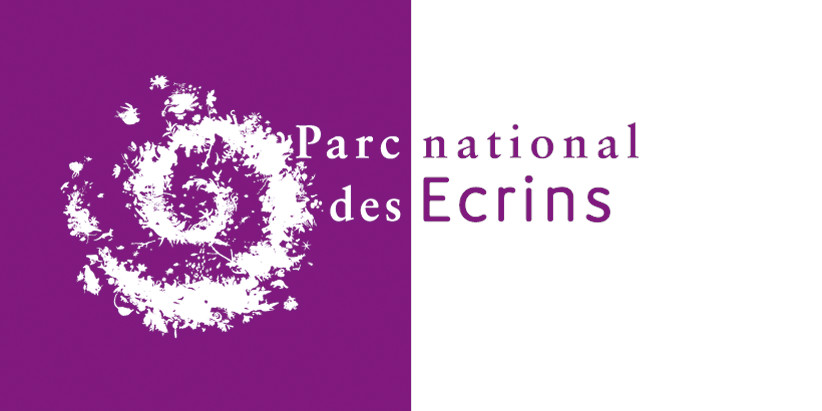
 History
HistoryDominique Villars
The botanist Dominique Villars was born in Noyer in 1745. From an early age he was interested in botany, and with his friend, Dominique Chaix, a priest and botanist from Roche des Arnauds, he discovered many new species. He wrote "L'histoire des plantes du Dauphiné" (History of Plants in the Dauphiné), bringing together 3,000 species. Shortly before his death in 1814, Napoleon Bonaparte appointed him botany professor at the Strasbourg Special Medical School.
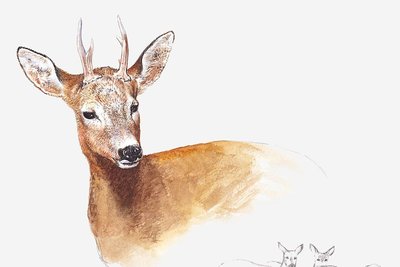
Chevreuil - Pierre-Emmanuel Dequest -PNE  Fauna
FaunaRoe deer
Walnut forests are a favourable home for roe deer. They came from Italy, the Isère and Drôme regions, and were added to some forty animals that were released between 1969 and 1975 in the neighbouring forests of Durbon and Morgon. This timid animal can be recognised by its red-brown coat and white patch on its rear.
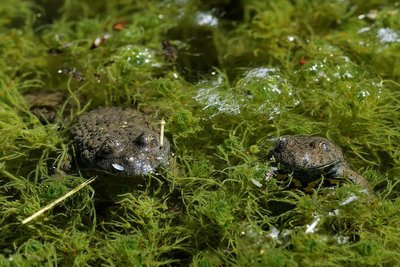
Sonneur à vendre jaune - Mireille Coulon - PNE  Fauna
FaunaYellow-bellied toad
Between the mountains and the River Drac, the water flows down as mountain streams and irrigation canals, hollowing out the sediment in the fluvial-glacier terraces where the mountain pastures have emerged. As the layers of eroded material of varying size and with impermeable clay layers are built up, sources are formed and feed small ponds. The yellow-bellied toad is a small toad that flourishes in habitats like these. The species is in decline all over its area of distribution due to the reduction in the number of such habitats. This is caused by draining, the creation of dams, levelling work and timber transport, among others. The population of this small amphibian is monitored by the National Park authorities.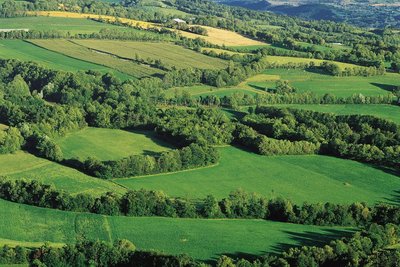
Bocage du Champsaur-Valgaudemar - Stéphane D'houwt - PNE  Flora
FloraThe Chamsaur woodlands
The woodland landscapes in lower Champsaur are unique in the Hautes-Alpes region. The network of hedges and canals surrounding the parcels of land result in agriculture of a high quality. Thanks to funding from the region and the EU in favour of maintaining the cultural and biological heritage, 70 species of trees and bushes, and over 80 bird species can be found here.

Le lac du Lauzon dans la vallée du Valgaudemar - Dominique Vincent - PNE  History
HistoryValgaudemar
Tradition says the name of the valley comes from the Burgundian chief Gaudemar, who took refuge here in the 6th century. The local inhabitants lived for a long time from subsistence farming and mining. Mountain-climbing began to take off in the second half of the 19th century, and tourism in the 1960s. There are 30 peaks over 3,000 m. The highest point, Les Bancs (3,669 m), stands at the end of this long, narrow glacier valley.

Aigrette garzette - Damien Combrisson - PNE  Fauna
FaunaOrnithologial diversity
Thirty years of careful inventories have identified 220 species of bird in the valley. This exceptional variety is not only due to the landscapes (hedges, wetlands, forests and high mountains) but also to the Champsaur's geographical position: not quite north-alpine, wide open to the south with the Manse and Bayard thresholds, ideal for exchange and for migratory birds such as herons, ducks, red-footed falcons or flycatchers.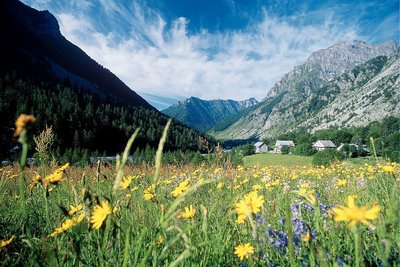
Prairie de fauche dans la vallée de Champoléon - PNE  Flora
FloraHayfields
When they have not been disturbed by modern fertilisation techniques and silage, around fifty species of plant can still be found in the hayfields. The most symbolic are the poet's daffodil, alpine salsify, meadow sage, sainfoin and globeflower that punctuate the landscape with their different colours.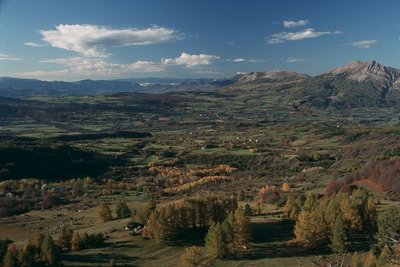
Le bocage du Champsaur, Saint-Michel-de-Chaillol - PNE  Flora
FloraHedging
Hedged landscapes were quite common in France before the war, but here, above an altitude of 1000 m, a wonderful diversity has been maintained. A patchwork of hedgerows, prairies and woods are home to an array of birds. Amongst them are many common sparrows (red-backed shrikes, stonechats, sparrows, quails and wrynecks) whose numbers are in decline in France, sometimes alarmingly so. Richness is therefore not solely due to rarity.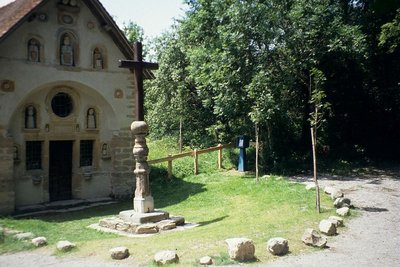
La chapelle des Pétêtes - Hervé Cortot - PNE  History
HistoryPetetes Chapel
This chapel is an oddity as well as a remarkable piece of popular art. Here the "pepetes" are dolls! The story says that in 1730, a shepherd named Pascal, who also happened to be a mason, started chipping rocks. All winter he chipped away at the rocks. When he had chiselled enough, he dug the ground and placed the stones on top of each other. When he finished, the hamlet of Aubérie had a pretty, little mountain chapel. The mysterious shepherd had created small alcoves in the chapel's facade. He started chiselling again, but this time with greater precision and love, as he was sculpting statues. In 1741, after working 11 years, he finished his work of art and placed a monumental cross in front of the chapel.
Les Infournas Hauts - Parc national des Écrins - Marc Corail  Geology and geography
Geology and geographyLes Infournas
The locality is made up of two hamlets:
- Les Infournas-Bas, former administrative seat of the municipality, with the mayor's office and the church, standing at 1,245 metres above sea level.
- Les Infournas-Hauts, a starting point for mountain hiking, which stands at 1,373 metres above sea level.
It is only possible to access the Drac valley, a lifeline for the region, via two winding roads, one to the north-west towards Chauffayer 10 km away, the other to the south towards Saint-Bonnet-en-Champsaur which is 7 km away. Most of the territory is made up of the inhospitable and extensively ravined slopes of the mountains Le Cuchon and Le Queyron. To the south, woods constitute its only real resource.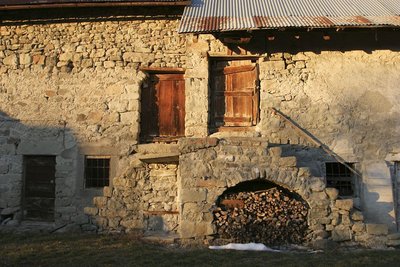
Une ferme aux Roranches, Champsaur - Marc Corail - PNE  Architecture
ArchitectureChampsaur architecture
Today's landscapes and the houses are no accident. They bear the trace of humans, who were less concerned with building attractive places, than with striving to find the best rigorously functional solutions for the area. In the northern part of the Drac valley, an area often faced with a cold wind, hedges were planted, buildings were close together and almost blind on the north-facing side. On the balconies to the east, as in St-Michel-de-Chaillol or St-Julien-en-Chapsaur, the aim was to find sunlight and the facade often had a large porch.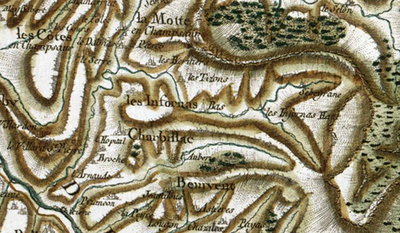
Carte de Cassini - IGN  History
HistoryThe origin of the name "Champsaur"
A dozen origins explain the name "Champsaur". Obviously the prettiest one, and the least likely, is that it means "champ d'or" (Field of gold) as Napolean is said to have shouted out "what a beautiful field of gold" upon discovering the area. Other explanations are "field of lizards (sauros meaning lizard in greek) or "Sarrasins field" (campus sauracenorum) due to their numerous invasions. However, the most likely explanation is that it comes from "campus saurus" the field or the land of Saurus, the name of the owner at the time.
Altimetric profile
Sensitive areas
Peregrine falcon
- Impacted practices:
- Aerial, Vertical
- Sensitivity periods:
- FebMarAprMayJun
- Contact:
- Parc National des Écrins
Julien Charron
julien.charron@ecrins-parcnational.fr
Short-toed snake eagle
- Impacted practices:
- Aerial,
- Sensitivity periods:
- MarAprMayJunJulAugSep
- Contact:
- Parc National des Écrins
Julien Charron
julien.charron@ecrins-parcnational.fr
Source

Report a problem or an error
If you have found an error on this page or if you have noticed any problems during your hike, please report them to us here:
